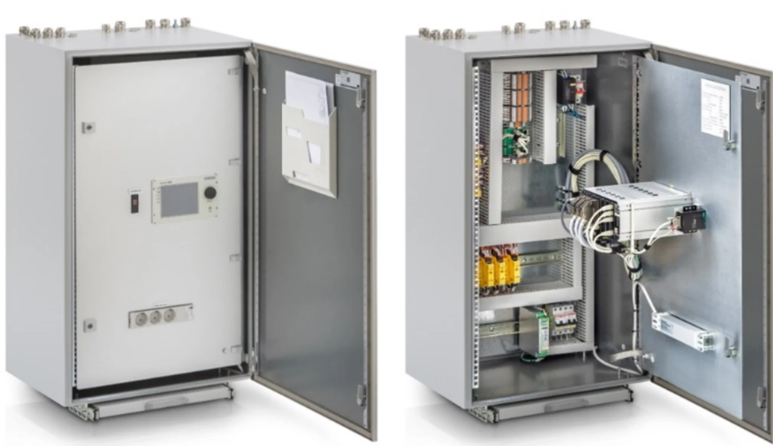
“Electrical cabinet” in English is the phrase for “electrical cabinet”. The word “cabinet” is understood as a cabinet, chamber, with drawers or lids to store and store things inside. In addition, it can also be understood that it is the brain, important part in a system or a small room, known and understood as “cabinet” Industrial Electrical Cabinet is a type of electrical cabinet commonly used in industries and must ensure the criteria of stability, durability, continuity and correct operation for a long time. in a variety of work environments. Normally, industrial electrical cabinets will have a larger structure and more complex control circuit structure than small electrical cabinets at home, because it is used in places where large capacity power supply is required.
There are many different types of industrial electrical cabinets on the market today. Depending on the needs of use or the application, there are types of electrical cabinets such as control cabinets, network cabinets, distribution cabinets, and telecommunications cabinets.The equipment and components are usually found inside the electrical cabinet Push button: most electrical cabinets have a push button, this part is usually designed on the front of the electrical cabinet for easy use and operation. With the current trend, mechanical buttons are gradually being converted to touch buttons or virtual buttons on the HMI screen.
Emergency stop button: The emergency stop button helps to switch off the entire electrical circuit in case the electrical system encounters a problem.Intermediate relay: electromagnetic relay with parts such as common contacts, normally open contacts, normally closed contacts, magnetic circuits, coils, relay feeders, springs, etc. Electromagnetic relay parts in electrical cabinets used in control systems with contacts.
In every good electrical system design, utility cabinets are at the heart of safety precautions. When managing large amounts of power, a safe, reliable way of managing power is required. In the event of an accident, a fire, flooding, blackout, or other problems, the in-house utility cabinet also contains the instant fix for electrical safety issues.
This is almost basic OHS, in some ways:
The utility cabinet containing the power management systems contains alternate power connections, shutdown switches, and often quick fix fuses and switches to manage specific issues.
The cabinet housing protects these important control systems from damage and tampering.
Utility cabinets can also function as separate housings for “auxiliary controls” in cases when other controls aren’t accessible. (These systems are mandatory in high voltage power systems.) Best practice electrical design always includes straightforward, easy-to-operate backup systems. Typically, the power controls for the backup systems will be routed through a standalone utility cabinet.
Cabinets may be hardwired and/or contain plug systems for power connection management.” style=”2″ show=”12″ gap=”15px”]
